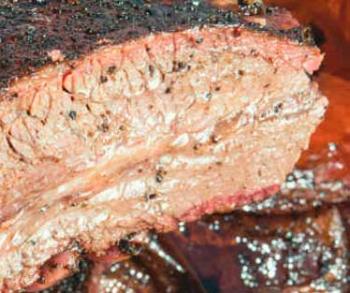Leaderboard
Popular Content
Showing content with the highest reputation on 07/20/2015 in all areas
-
Hmmmm..... the dangers of being quoted. Insulin levels do matter and the pattern of caloric intake definitely effect them. I am pretty sure I never said a few beers with your carbs Dennis. For those attempting to lose weight and retain lean muscle mass, a program of high protein, low fat, and low carb is good, with frequent small meals and a strength training program if your health will permit. A "cheat day" does help your body from adjusting to a routine, but does not consist of 4000 calories of pizza and beer. To lose one pound a week, one must run a 500 calorie per day deficit. Muscle burns calories even at rest. Early morning weight training is considered best as our natural testosterone levels are highest then. You can lose weight many different ways, this one is quite effective. The key however is not to consider this a diet. It is a way of life. After reaching your goal weight you can add a modest amount of carbs back to reach a steady state. The biggest plus to a low carb diet is the decreased hunger stimulus from the lower insulin levels. Americans have the most expensive healthcare as we take the poorest care of ourselves. Doctors cannot fix this. We all control what we put in our bodies.Now we are allowing our children to be obese before puberty. I would encourage everyone to consider portion size as a critical part of your way of life. I am off my soap box, and apologize if I have offended anyone.2 points
-
After not buying a BBQ book in over a decade, I thoroughly enjoyed Aaron Franklin's Franklin Barbecue: A Meat-Smoking Manifesto, published in April 2015. http://www.amazon.com/Franklin-Barbecue-Meat-Smoking-Manifesto-Aaron-ebook/dp/B00N6PFBDW/ As everyone's circumstances are different, and our ceramic cookers behave very differently from Webers or offset-fireboxes, the only book I'd found useful back in the day was Robb Walsh's Legends of Texas Barbecue Cookbook, which by describing the history and diversity of techniques in central Texas BBQ, serves more as background philosophy for one's own search than an actual cookbook. http://www.amazon.com/Legends-Texas-Barbecue-Cookbook-Recollections/dp/0811829618/ Aaron Franklin is self-taught, while very much in the central Texas tradition. There's a remarkable similarity with self-taught bread bakers, who have written the most useful tomes in that category. The obligatory restaurant origin-legend is nevertheless an amusing read. Then an equipment chapter that dives headlong into how to make the ideal smoker from a 1,000 gallon propane tank, assuming basic metal-working skills? Ha, reading this is as close as I may come to welding. Franklin's preferred style involves a very contemplative, simple treatment of the best meat available. This was the hook that got me in: I felt like everything I'd learned in a decade was an itty bit of what he had figured out with a compatible philosophy, and that by the end of a day's reading I'd be transported much further along. Then the differences became apparent. His preferred pit temperature is 275 F for everything. Rub goes on by eye (no weighing salt) mere hours before cooking. He manages moisture along with smoke, and foils (or butcher paper for brisket) to close out the cook. Again like running a bakery, there are many schedules that could work, but one needs to figure out a protocol that maximizes production given the logistical contraints of available storage, equipment, and worker schedules. His discovered principles are as much a solution to these constraints as global truths. Our problems are different; my biggest logistical concern is fitting the cook around a night's sleep. Nevertheless I intend to try his protocols as close to verbatim as one can in a ceramic cooker. Once one has hit a plateau in anything, one can only go further by starting again from scratch, and seeing if the "science" one believes is repeatable. If I fear anything from old age, it is the "I already know I am right!" ossification that keeps one from venturing back down these rabbit holes. While I can "place" this book as cooking the highest quality meats in a central Texas tradition, its greatest strength is explaining a system of thought that allows one to adapt to changing circumstances. Mainstream books assume a Weber and cheap meats, teaching how to mask all this with 12 ingredient sauces. Franklin is unapologetic about the chapter on welding, but has dealt with his fair share of hardships trying to produce great BBQ while traveling. There's been much debate in this forum on the best way to cook brisket; Franklin sees a continuum of technique parametrized by the characteristics of the meat, melding the fast and slow approaches debated here into one world view. I nervously read into the section on "dwells" wondering if he'd flub the science, only to realize that he understood dwells better than any author I'd read. He then takes some of the myth out of smoke rings. I'd had the impression that BBQ judges get their tastebuds zonked early from bad smoke, and go by visuals that competitors learn to manipulate. Just as the crema in a good espresso is an easily manipulated artifact orthogonal to actual coffee quality. Franklin doesn't worry about producing smoke rings. The recipes are if anything an afterthought, one learns instead from all these master class side discussions. The recipes serve to consolidate the points in the book, to make it clear there really isn't anything else going on. It was fun reading this after serving pork butt to 60 people for Sunday lunch, and deflecting every "what did you do?" question with "as little as possible". The discussions on trimming and on slicing brisket are alone worth the price of admission. This is a "once every decade" BBQ book for me, highly recommended.1 point
-
He finally got a Wabbit but it took him so long he lost a lot of street cred. To build up his cred he served it as street Tacos. Brined for a few hours. Out of the brine. Oiled down and seasoned. Lightly caramelized Vidalia onions and sweet peppers. Seared the Wabbit. Deglazed the pan with red wine. Then added everything back in. On the kamado at 270* for 4 hours. Here it is so tender it fell apart when I removed it from the pan. Dinner was served. Tortillas, Spanish rice, pulled Wabbit, wine reduction, dip filling, onions and peppers. This was a tribute cook to my Mom. She grew up in the depression. They were so poor my Grand Dad raised rabbits so they had meat on the table. I've never eaten rabbit before much less cooked one. Mrs skreef had eaten rabbit before and suggested a braise. I took that idea and ran with it for street tacos. This was a totally awesome cook. It may have been my first Wabbit but it won't be the last. I finally found a reasonably priced butcher that not only stocks the standard meats but also some different cuts. We'll be going there every week.1 point
-
Galvanized metals produce toxins when heated in a BBQ cooker. I came up with the Dutch oven smoke pot idea a decade ago, on the off-brand K7 I was using then. One can usually get away without flour paste, and it of course depends on the Dutch oven. After a few cooks where I had to rip apart the cook to get at a smoke pot that had lurched over on shifting charcoal and spilled open, I don't risk it. Really not a big deal, make a little ziplock bag and let the flour water paste sit a while, like hydrating bread dough. For me, the paste always thickens and settles into a fairly ideal and easy to use mixture. The tricky part of Dutch ovens are getting them started so the smoke fits your schedule. I tend to start my fires with a propane weed burner. (My other contribution to BBQ is adding a hose clamp to weed burners so they can perch just so on the edge of the KK. I also weigh salt, but I learned that from Paul Bertolli.) These days, I'm happier if I aim the weed burner at several side of the Dutch oven, only incidentally lighting KK extruded coconut lump charcoal under the pot as I completely heat up the pot. This gives me a quality of smoke I like, right away if I'm eager to add my meat.1 point
-
Low carb diets.. I hope i get this right.. My dear friend MK1 told me that a low carb diet will prevent you from making too much insulin which then creates fat.. What ever your diet is you create a carb/insulin baseline.. If you cut out all carbs you will still have a baseline but it will drop to the point where even the carbs in vegetables will come into play and you could actually create too much insulin without eating the traditional carbs.. So here's the good news.. You need to keep you baseline high so you loose weight and don't create too much insulin.. How? One day a week you need to spike your carb intake.. that's right.. scarf down those carbs with a few beers! Your insulin will spike a bit and keep that baseline high so the rest of the week it's soo high you limit your insulin production.. Sounded good to me.. I hope I got that right.. Probably a term wrong here and there but that's the essence.. and you get to spike your carbs once a week! LOL1 point
-
Thanks, tinyfish. I'm thinking ahead, this year it's the KK although I did look in the flyer and it must not be available in our local flyer. Focus is on the KK, tomorrow should be delivery day:)1 point
-
Fingers crossed that tomorrow is actually the big day for you MacKenzie! We're all just about as excited as you are!1 point
-
I'm with Ceramic Chef. Been using the CI Dutch Oven smoker pot for years now. Works like a charm. The only thing is getting the hang of the flour/water paste to seal the lid on airtight to force all the airflow out the holes in the bottom. Even with lots of practice, I sometimes get the texture too thin or too goopy. I put the DO smoker on as soon as I know that the coals are lit and going OK. The smoker heats up in parallel with the KK, so by the time you are ready to put on the meat, it's just beginning to smoke. And, the coolest part - you get some nice chunks of lump charcoal as a side benefit when you're done!1 point
-
Tony, I think it is going to be the BIG day, I plan on going into the shipper in the morning and have it arranged that my carpenter comes with his truck and they load the grill onto that and then he drives to my house over the lawn and down to the deck stairs. We set up planks and roll it from the back of the truck and onto the deck. We may be able to slide it crated but if not I think we can uncrate on the truck and then roll it. In my mind it works perfectly, ask me tomorrow how it actually went:) Forecast is for rain all day, I just hope I can get some pixs of the process. Stay tuned:)-1 points






